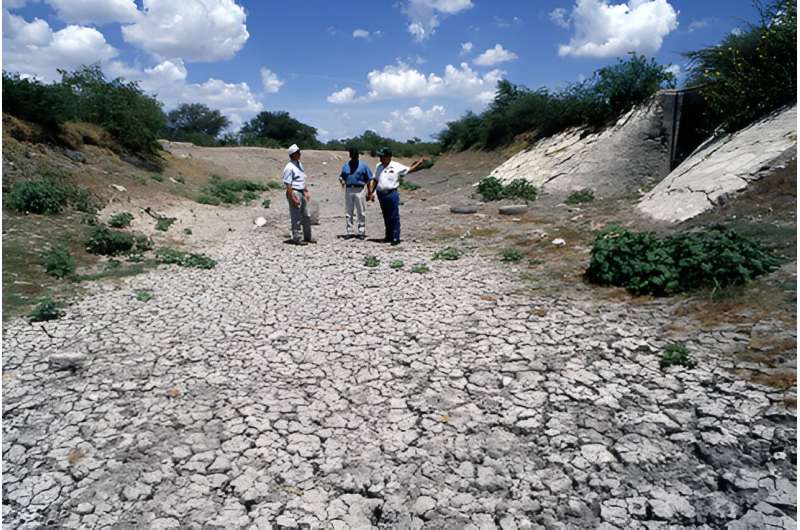This article has been reviewed according to Science X's editorial process and policies. Editors have highlighted the following attributes while ensuring the content's credibility:
fact-checked
peer-reviewed publication
trusted source
proofread
Scientists develop map-based tool to address water scarcity in Southwest

Scientists at the United States Department of Agriculture (USDA) Southwest Climate Hub and California Climate Hub have developed a browsable map-based tool that addresses water scarcity in the U.S. Southwest.
The Water Adaptation Techniques Atlas (WATA) consolidates more than 200 case studies on research and practices that water managers and producers can use to find location-specific and topical information to make informed decisions regarding water management.
Over the years, urban areas and agriculture have expanded in the Southwest region. For the past century, water use in the Southwest has been sustained through the capture, storage, and distribution of surface water, aided by dams, canals, and associated infrastructure, while extraction of groundwater has also intensified.
However, water scarcity has become a pressing issue with extremely hot temperatures and severe prolonged droughts in a region already challenged by its arid and semi-arid conditions. As reservoir and aquifer levels drop, information about strategies to adapt to this new reality is urgently needed.
WATA provides information based on research from USDA's Agricultural Research Service (USDA-ARS) and other sources about practices for lessening the gap between water demand and available supply, with an emphasis on cropping and irrigation practices across the Southwest, including Arizona, California, Nevada, New Mexico, and Utah.
The solutions documented in WATA include centuries-old techniques employed by the indigenous peoples of the Southwest region to grow crops in arid lands, as well as novel technologies such as aquaponics (integrating fish and plant crop production) and agrivoltaics (integrating solar energy and crop production). Several cases highlight tools and technologies for matching irrigation application to plant water needs using soil moisture sensors, remote sensing, or weather data.
Dissemination of information about adaptation options is critical, as individuals, organizations, and communities look to take proactive measures to adapt to climate change. Managers, researchers, and educators can use the case studies, research outcomes, and practices available in WATA to identify new strategies to help mitigate the effects of temporary water shortage and expected longer-term water scarcity.
The development of WATA is an ongoing collaborative project that started in 2020 among USDA-ARS, USDA Southwest Climate Hub, USDA California Climate Hub, UC Davis Center for Watershed Sciences, and USDA's Economic Research Service. Scientists will continue to incorporate new research findings and feedback from agricultural experts and others concerned with water scarcity in the Southwest.
The recent article published in the journal PLOS Water titled "The water adaptation techniques atlas: A new geospatial library of solutions to water scarcity in the U.S. Southwest" provides additional details on the project.
More information: Noah Silber-Coats et al, The water adaptation techniques atlas: A new geospatial library of solutions to water scarcity in the U.S. Southwest, PLOS Water (2024). DOI: 10.1371/journal.pwat.0000246
Journal information: PLOS Water
Provided by Agricultural Research Service





















